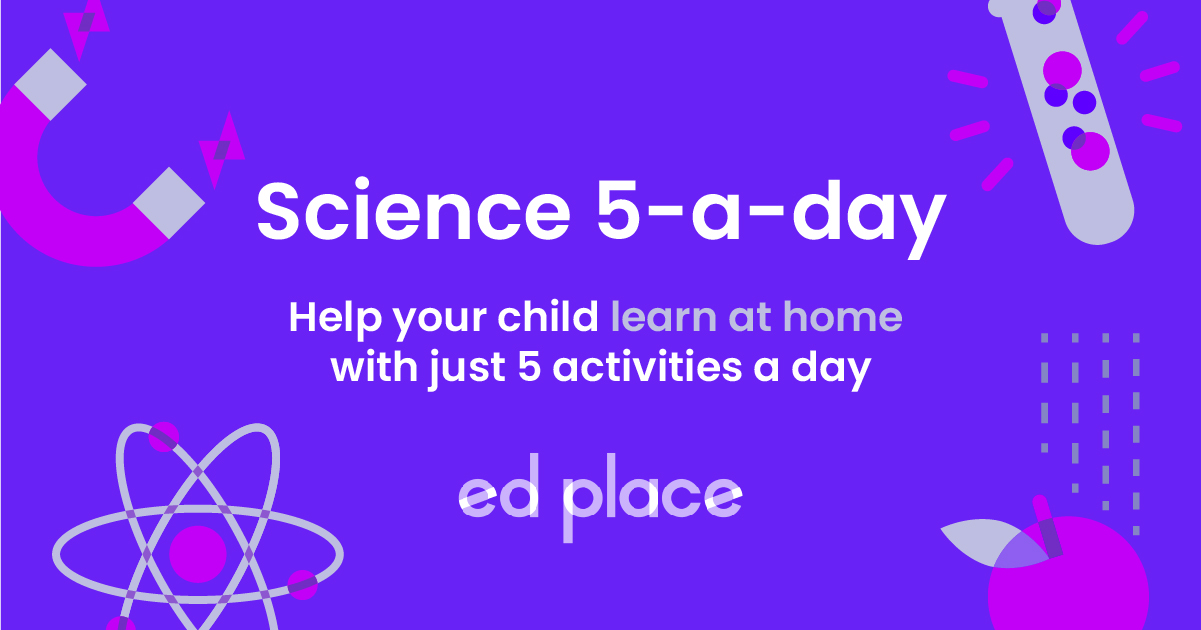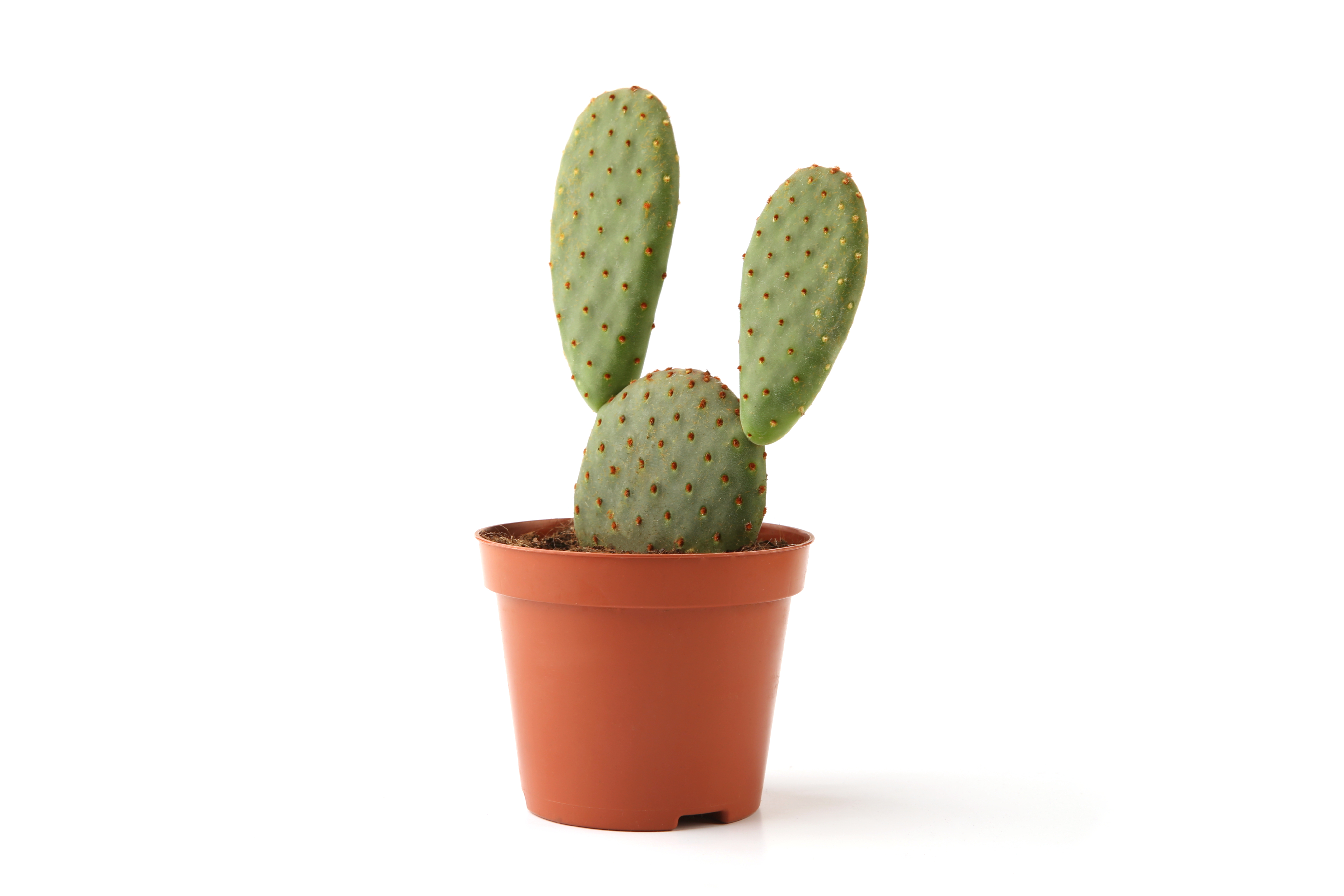
EdPlace's Year 9 Home Learning Science Lesson: Identify Variables in an Investigation
Looking for short lessons to keep your child engaged and learning? Our experienced team of teachers have created English, maths and science lessons for the home, so your child can learn no matter where they are. And, as all activities are self-marked, you really can encourage your child to be an independent learner.
Get them started on the lesson below and then jump into our teacher-created activities to practice what they've learnt. We've recommended five to ensure they feel secure in their knowledge - 5-a-day helps keeps the learning loss at bay (or so we think!).
Are they keen to start practising straight away? Head to the bottom of the page to find the activities.
Now...onto the lesson!
Are You Up to Speed with Variables?
Independent, dependent and control variables. Never heard of them? Well, grab yourself a cuppa, a biscuit or two, and prepare to feel confident enough to teach it to your young scientist standing on your head with a blindfold on! Working scientifically is a key area within the national science curriculum, from primary all the way up to A-level. This area of study concerns skills which relate to practical investigations, for example planning an experiment, carrying it out, writing up conclusions, as well as processing results mathematically. However, identifying variables in scientific investigations can be a cause of much confusion.
By the end of this 5 step guide, your EdPlace team are confident that your child will be able to:
1) Understand the different kinds of variables
2) Apply this knowledge to a practical investigation
3) Explain this knowledge back to you (If they've really cracked it!)
Step 1: Learning the Lingo!
Before we get our hands dirty with practicals it's crucial that Year 9 students are clear on the following terminology. Below are three key terms and their definitions which we shall focus on in this topic.
Independent variable - the one condition that is changed during a scientific experiment, by the scientist. The experimenter alters the independent variable in order to test the dependent variable.
Dependent variable - the one condition that is observed or measured during a scientific experiment.
Control variable - these are the elements that are kept the same during a scientific experiment. Any change to a controlled variable would invalidate the results.
Step 2: Why Must We Ensure Our Scientific Experiments are Fair?
Science experiments, or investigations, are the part of science lessons that students enjoy most! It gives them a chance to witness science at work beyond textbooks and worksheets, and really get stuck in. So much of science centres things you cannot see, so investigations enable teachers to bring the subject to life.
Scientific investigations always have a purpose to them – they involve observations and measurements being taken. They involve conditions being tweaked, seeing how these changes impact the outcome. Then, from the results, we collect we can draw conclusions. These are the fundamentals of scientific study - investigations allow us to advance scientific knowledge and better our understanding of the world and its workings.
Children are taught as early as Year 1 that we must make sure any experiments are a fair test. For example, if we conduct an experiment looking at whether boys run faster than girls in a race, we must make the test fair. We must make sure the distance they run is the same, the conditions are the same (i.e. not make the girls run with only one shoe on) and the way we determine each participant's speed is the same (i.e. not count in our heads for the boys, but use a stopwatch to measure the girls' speed). This understanding of fairness is our foundation for learning about variables, which we shall look at now.
Step 3: Getting to Grips with Variables
The elements that change in an experiment are called variables. A variable is any factor, trait, or condition that can exist in differing amounts or types. An experiment usually has three kinds of variables: independent, dependent, and controlled. Let's use a basic experiment as an example: A group of students want to find out whether temperature affects how quickly sugar dissolves. They set up an experiment with four beakers of water, each at a different temperature. They add a spoonful of sugar to each, sir each beaker once only, and timed how long it took for the sugar to disappear.
Let's quickly refresh our memory:
Independent variable - the one condition that is changed during a scientific experiment, by the scientist. There is only ever one independent variable.
Dependent variable - the one condition that is observed or measured during a scientific experiment. There is only one dependent variable.
Control variable - these are the elements that are kept the same during a scientific experiment. There can be multiple control variables. Any change to a controlled variable would invalidate the results, so it's really important that they are kept the same throughout.
So, using our example, we now should be able to identify the variables ourselves...
Independent variable = the temperature of the water
Dependent variable = the time it takes for all the sugar to disappear/dissolve
Control variables = the volume of water in beakers, the size of the beaker, the amount of sugar, the number of times it is stirred, the type of sugar used.
An easy way to think of independent and dependent variables is, when you're conducting an experiment, the independent variable is what you change, and the dependent variable is what changes because of that. You can also think of the independent variable as the cause and the dependent variable as the effect.
Let’s attempt another example together. Imagine you want to see which type of fertiliser helps plants grow fastest, so you add a different brand of fertiliser to each plant and see how tall they grow.

Independent variable = the type of fertiliser given to the plant
Dependent variable = plant height
Control variables = the type of plant used, the amount of fertiliser given, the time given to grow. And all other conditions kept the same between each plant e.g. the amount of water each plant receives, the temperature of the room, the amount of sunlight etc.
Why not try executing your own investigation? You could look at how the mass of a toy attached to a parachute affects how long it takes to fall. This will give you an opportunity to make a parachute (perhaps using a piece of scrap material and some string, tried to various toys such as a toy car, a Playmobil person, a cuddly toy). You will also need a set of scales to measure the mass of each toy. Remember to use the same parachute each time! As you’re doing the investigation you can identify what are the independent and dependent variables, and what elements are your control variables.
Step 4: Put Your Knowledge to the Test!
Ok, now its time to see whether all this information is sinking in. Answer the following questions to test your understanding of variables.
1. Sally is performing a test in which she is trying to see if plants can grow when given fizzy drinks instead of water. She gives one plant water and a second identical plant the same amount of fizzy drink for two weeks. What is the independent variable?
a) The plants
b) The amount of liquid
c) The type of liquid
d) Sally
2. Mark carried out an investigation to see how the strength of an electromagnet coil changes with the number of coils. What is the dependent variable?
3. April and Harry wanted to find the best pen. They decided to put a few to the test and measure which pen type lasted the longest before running out. They each chose a pen, Harry a ballpoint pen and April a fountain pen. Both used their pen to write with at school from Monday morning, and by Wednesday, April’s had run out. They concluded that ballpoint pens were the best.
a) What was the independent variable?
b) What was the dependent variable?
c) Why is the experiment not reliable enough to base a conclusion on? i.e. What control variables should they have used?
Ready for a trickier one that will really push you?
4. When magnesium is added to hydrochloric acid, how does acid concentration affect temperature change?
|
Variable |
✔ if this is the independent variable |
✔ if this is the dependent variable |
✔ if this is a control variable |
|
Acid concentration |
|||
|
Volume of acid |
|||
|
Temperature change |
|||
|
Mass of magnesium |
Step 5: Let's apply your knowledge
Now that we've moved through this lesson together and put this knowledge to the test with practice questions, why not have ago tackling some EdPlace activities? Assign your child the following five activities, in order, to really consolidate their understanding. This way, you will be able to identify potential areas of concern or, ideally, demonstrate your child's confidence and comprehension! All activities are created by teachers and automatically marked. Plus, with an EdPlace subscription, we can automatically progress your child at a level that's right for them. Sending you progress reports along the way so you can track and measure progress, together - brilliant!
Activity 1 - Evaluate Scientific Investigations
Activity 2 - Measure Accurately
Activity 3 - Draw and Evaluate Conclusions
Activity 4 - Plan an Investigation: Hypothesis and Method
Activity 5 - End of Key Stage 3 Assessment: Biology
Answers:
1) The type of liquid (c)
2) The strength of the electromagnet
3a) The type of pen
3b) The time taken for each pen to run out
3c) The experiment is unreliable because so many variables were left uncontrolled. April and Harry should have controlled the amount of writing produced by each person, even the size of writing would have impacted how quickly each pen ran out. The amount of ink in each pen when they started should also have been controlled.
4)
|
Variable |
✔ if this is the independent variable |
✔ if this is the dependent variable |
✔ if this is a control variable |
|
Acid concentration |
✔ |
||
|
Volume of acid |
✔ |
||
|
Temperature change |
✔ |
||
|
Mass of magnesium |
✔ |
Keep going! Looking for more activities, different subjects or year groups?
Click the button below to view the EdPlace English, maths, science and 11+ activity library

.jpg)






